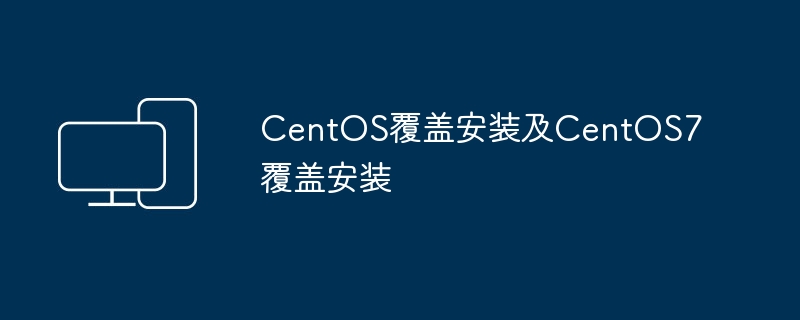Home >Computer Tutorials >Computer Knowledge >CentOS overlay installation and CentOS7 overlay installation
CentOS overlay installation and CentOS7 overlay installation
- WBOYWBOYWBOYWBOYWBOYWBOYWBOYWBOYWBOYWBOYWBOYWBOYWBforward
- 2024-02-29 22:00:03691browse

In the CentOS operating system, it is often necessary to perform an overlay installation to solve system problems or perform updates. This article will introduce in detail the steps of CentOS overlay installation and CentOS7 overlay installation to help you effectively manage and maintain the system.
CentOS overlay installation
CentOS overlay installation when the system is already installed is usually to fix system problems or update. Before performing this operation, be sure to back up important data to avoid losing it.
1. Download the latest CentOS image file and make a bootable USB disk or CD.
2. Insert the boot USB flash drive or CD into the computer, restart the computer and enter the BIOS settings, and set the boot device to the USB flash drive or CD.
3. After entering the installation interface, select "Install CentOS" to install.
4. Select "Install CentOS" in the installation type.
5. Select the hard disk to be installed in the installation destination and select "Overwrite all data".
6. Set the system language, time zone and other options, and create a user account and password.
7. Click "Start Installation" to perform overlay installation.
8. After the installation is complete, restart the computer and enter the newly installed CentOS system.
CentOS7 overlay installation
The overlay installation method of CentOS7 is similar to CentOS, but there may be some differences during the installation process.
1. Download the latest CentOS7 image file and make a bootable USB disk or CD.
8. After the installation is complete, restart the computer and enter the newly installed CentOS7 system.
Through the above steps, you can successfully complete the overlay installation of CentOS and CentOS7 to ensure the normal operation and update of the system.
Shared for you
As an open source operating system, Linux has a wealth of command line tools and functions, one of which is the "find" command. Through the "find" command, you can quickly find files and directories, helping you better manage the system. You can find files ending with ".txt" using the following command:
“`
find /path/to/directory -name “*.txt”
In this way, you can find all files ending with ".txt" in the specified directory and list their paths. I hope this little knowledge will be helpful to you!
The above is the detailed content of CentOS overlay installation and CentOS7 overlay installation. For more information, please follow other related articles on the PHP Chinese website!

